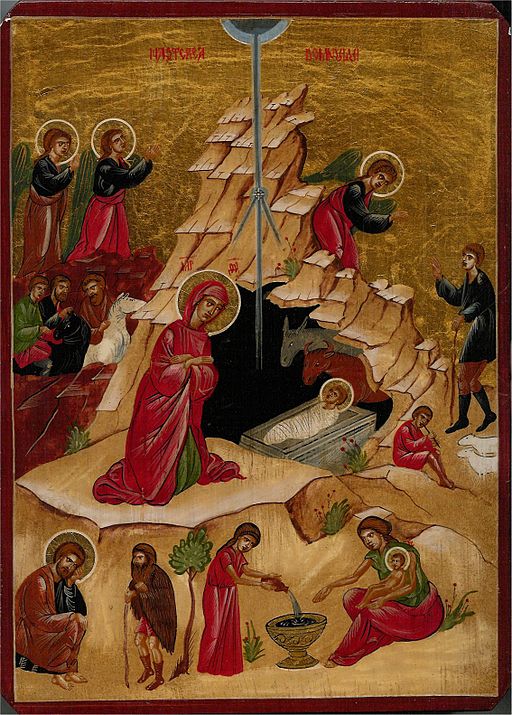
(Ch XIX, 3) And the midwife went forth of the cave and Salome met her. And she said to her: Salome, Salome, a new sight have I to tell thee. A virgin hath brought forth, which her nature alloweth not. And Salome said: As the Lord my God liveth, if I make not trial and prove her nature I will not believe that a virgin hath brought forth.
(XX. 1) And the midwife went in and said unto Mary: Order thyself, for there is no small contention arisen concerning thee. And Salome made trial and cried out and said: Woe unto mine iniquity and mine unbelief, because I have tempted the living God, and lo, my hand falleth away from me in fire. And she bowed her knees unto the Lord, saying: O God of my fathers, remember that I am the seed of Abraham and Isaac and Jacob: make me not a public example unto the children of Israel, but restore me unto the poor, for thou knowest, Lord, that in thy name did I perform my cures, and did receive my hire of thee. 3 And lo, an angel of the Lord appeared, saying unto her: Salome, Salome, the Lord hath hearkened to thee: bring thine hand near unto the young child and take him up, and there shall be unto thee salvation and joy. 4 And Salome came near and took him up, saying: I will do him worship, for a great king is born unto Israel. And behold immediately Salome was healed: and she went forth of the cave justified. And lo, a voice saying: Salome, Salome, tell none of the marvels which thou hast seen, until the child enter into Jerusalem.
According to the apocryphal second-century gospel, the Protoevangelium of James, Joseph went in search of a mdwife for Mary when it became time to give birth. He brought back to the cave two women, Zelomi and Salome, who were too late to assist in the delivery but who marvelled at the possibility of a virgin birth. Zelomi expressed her belief but Salome, doubting, wished to make an examination herself. For her impudence Salome’s hand was withered but an angel urged her to place it on the baby who at once healed it — the first miracle of Jesus. The two midwives were often portrayed in Nativity art of the Middle Ages until the Council of Trent discouraged it as non-scriptural. The two women continue to appear in Eastern Orthodox icons, as illustrated above on the bottom right.